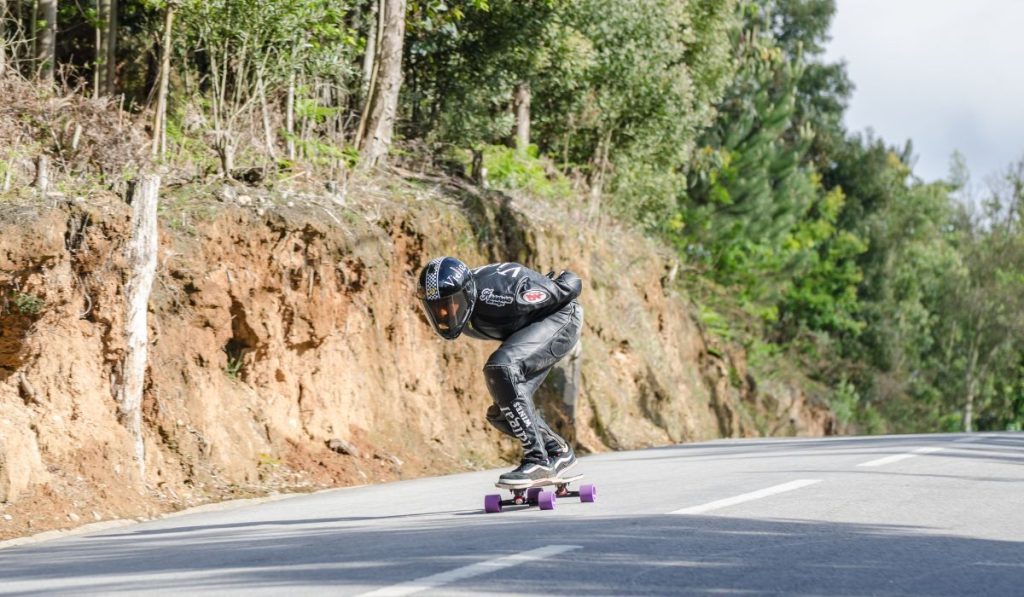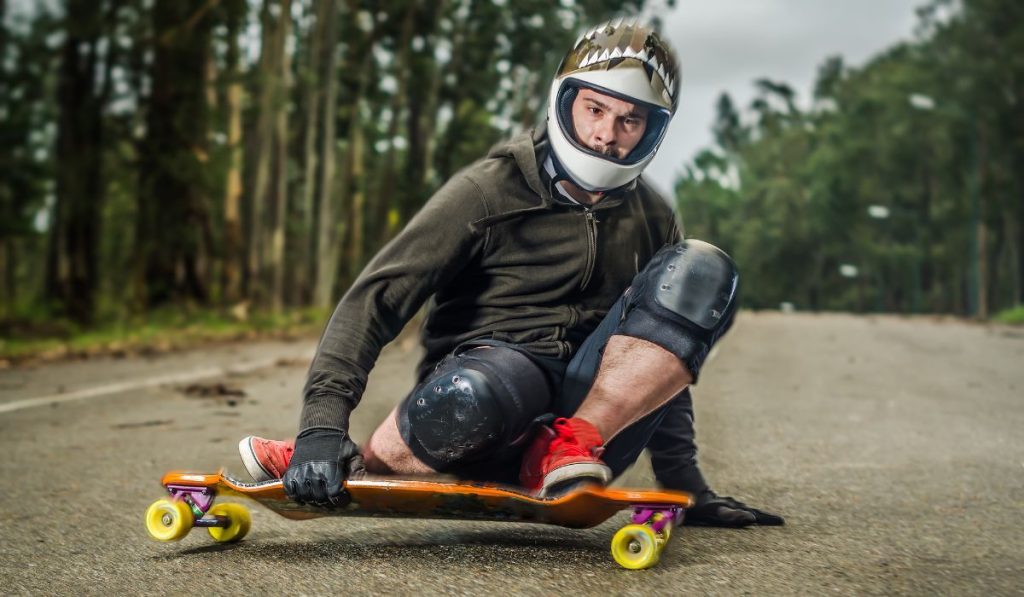Buttboarding and street luge are quite similar. Street luge involves a very different type of board than buttboarding does, however.
While buttboarding uses a longboard (ridden in a specific way), in street luge, a specially-designed street luge board is called for.
- ✅ 42 X 9 Inch Longborads Skateboards, drop through camber deck offers super flex and shock absorber.
- ✅ Cold press 9 ply natural hardrock maple and epoxy glue, healthy materials bring more fun, and is better for environment.
- ✅ ABEC-9 high speed chrome steel bearings,7 inch 180 genuine aluminum trucks are adjustable as 50 or 45 degree, and take to you great maneuverability.
What’s more, street luge tends to be more questionable in the eyes of the law, as the boards are more obvious and you tend to go much faster!
What is Buttboarding?
Have you ever heard of buttboarding? Or, if you’re a longboarder, perhaps you’ve tried it.
This is a hobby that involves laying down on a longboard at the top of a hill. From there, you give yourself a push, and then gravity does the work!
Buttboarding was invented as a way to achieve maximum speed on a longboard – but it’s very hard to stop, and nearly impossible to steer.
This means that crashes are basically a certainty, and there’s a lot of very real danger!
In the ‘80s, there were some races in California. While these started out good fun, pretty soon injuries were getting serious (for both the racers and the spectators).
This has relegated buttboarding to a hobby rather than an official extreme sport – it simply involves too much risk.
What is Street Luge?

This is where street luge comes in; specifically, it was born from the need to make buttboarding safer.
Fans came up with a new design, especially for buttboarding, and dubbed it ‘street luge.’ This design looks like a 5-foot, stream-lined sled crossed with a longboard – and it goes faster than either!
For maximum speed, this lightweight board is designed to keep your center of gravity low. As a result, once they get going, a buttboarder can easily reach speeds of 60 to 85 MPH – an insane number!
For this reason, street luge also puts an emphasis on the proper location and gear.
It’s advisable to street luge on a course, as it will be free of obstacles, and the pavement will be smooth.
Oftentimes, street luging in public is also illegal, so before you do it, you’ll probably want to double-check.
Gear

Both buttboarders and street lugers require similar, highly protective gear. See below!
- A helmet. Any buttboarder or street luger worth their salt knows the importance of a good helmet. Head injuries are the most dangerous, so a helmet can often be a literal lifesaver!
- A face shield. A face shield is something you don’t typically wear while longboarding. It’s necessary while buttboarding or street luging, however! Since you’ll be going so much faster, you’ll kick up more dust – and the last thing you want is obscured vision as a buttboarder or street luger!
- Racing gloves. Racing gloves are a must-have for buttboarders and street lugers alike. The first thing most do in a crash is put their hands out to catch themselves; this means that you can skin them up pretty bad if they’re not protected. Some durable racing gloves should do the trick.
- Booties. Whether you’re street luging or buttboarding, your basic Converse shoes or sneakers aren’t going to cut it. Your feet are what you’ll use to stop, so you’ll need something that can stand up to some serious friction. This is what (sport) booties are for!
- A racing suit. Last but not least, any street luger or buttboarder will need a racing suit. This is doubly important as a street luger, as you’ll be going even faster!
Is Buttboarding a Sport?
Buttboarding is not an official sport. This is due to the high potential for injuries (some have even been fatal).
There were some races in California, in the ‘80s. These quickly died out due to crashes and casualties of both racers and spectators, however!
This being said, for adrenaline junkies, the hobby is still quite popular!
Is Street Luge a Sport?
More surprisingly, street luge is not a sport, either! Despite the alterations to the classic longboard, a street luge board only reduces – not eliminates – the danger.
When all is said and done, there’s simply still too much risk.
Learn more about this incredible sport here. Read our complete guide to Street Luge
Street Luge is Illegal While Buttboarding is Technically Legal

While a full-on street luge board in public might get you in trouble with the law, a longboard is entirely legal.
This means that you can potentially get away with buttboarding, whereas you are less likely to be allowed to street luge at your leisure.
as it’s more obvious, and you go a fair bit faster!
So, if you’ve been wondering ‘how is buttboarding different than street luge,’ there’s your answer!
The boards are quite different, despite the fact that the hobbies are similar.
Street luge also tends to be more questionable in the eyes of the law – it varies depending on location, however, so be sure to give this a double-check!





